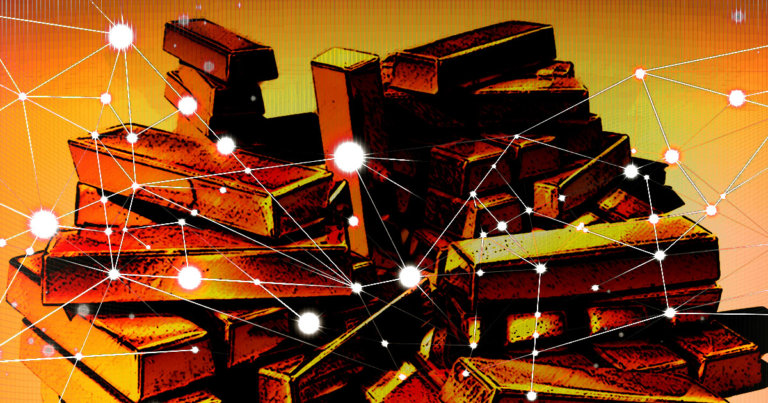 Gold now needs blockchain in an ironic twist of fate
Gold now needs blockchain in an ironic twist of fate Gold now needs blockchain in an ironic twist of fate
London Bullion Market Association (LBMA) and the World Gold Council (WGC) are launching a blockchain pilot to track the provenance of gold.

Cover art/illustration via CryptoSlate. Image includes combined content which may include AI-generated content.
Two of the most notable players in the global gold industry are collaborating to design a scheme to help investors “trust that their gold is genuine and has been responsibly and sustainably sourced.”
The London Bullion Market Association (LBMA) and the World Gold Council (WGC) are developing a new international system of gold bar integrity, chain of custody, and provenance. The world’s oldest store of value is ironically reaching out to decentralized ledger technology to prove its legitimacy.
The partnership selected aXedras and Peer Ledger to demonstrate the efficacy of their blockchain technology. aXedras produce a product they call the Bullion Integrity Ledger™, a “product platform that connects all stakeholders of the global precious metal industry.”
Meanwhile Peer Ledger “use blockchain technology to solve environmental, social and governance problems in global supply chains.” Neither company runs a public blockchain or publicly tradable token.
The news is not necessarily bullish for the broader crypto market. Both companies operate private blockchains instead of a public ledger that most people are familiar with.
Further, Peer Ledger criticized Bitcoin for using “copious amounts of energy to perform,” whereas their blockchain’s “energy consumption is comparable to other cloud-based technologies companies already use.” Private blockchains remove the transparency and trustless nature of decentralized public ledgers like Bitcoin or Ethereum.
The goal is to inspire the gold industry to adopt this technology so that all gold bars are documented and tracked throughout the entire journey from mine to jewelry manufacturers.
Ruth Crowell, Chief Executive Officer, LBMA, commented:
“The international trade in wholesale, physical gold depends on confidence. The initiative announced today underlines the confidence that all participants in the market can have in the integrity and accountability of the gold they trade, and the gold they buy. This is a major advance in furthering transparency for the common good of the gold industry.”
A private, permissioned blockchain, means that only a selected number of individuals are authorized to update the blockchain, which is only visible to authorized users. Given their goal to create a “proof of providence” for the precious metals industry it seems counterintuitive to use a system that can be easily changed by authorized individuals. An auditor cannot know that they have been given the correct version of the ledger if they do not have full visibility of the blockchain.
The simple question becomes, what is the point? The gold industry is experimenting with blockchain within a remit that renders moot the best parts of the technology. A cynical person may think the initiative has been designed to fail. Bitcoin is the biggest threat to gold’s position as the world’s premier store of value after all.







































